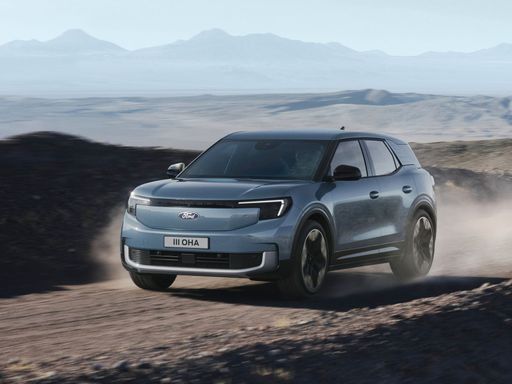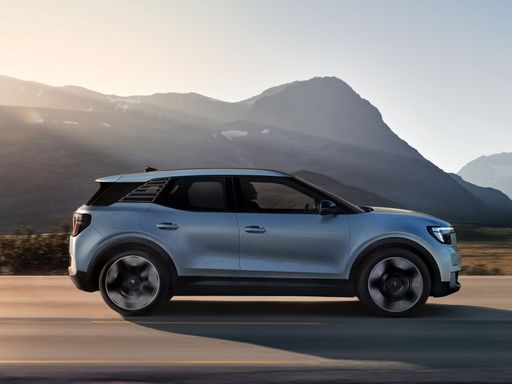Ford Explorer EV vs Hyundai IONIQ 9 – Which car suits you better?
Compare performance, boot capacity, efficiency and price at a glance.
Find out which car is the better choice for you – Ford Explorer EV or Hyundai IONIQ 9?
Here’s where it gets real: The technical differences in detail
Costs and Efficiency: Price and efficiency are often the first things buyers look at. Here it becomes clear which model has the long-term edge – whether at the pump, the plug, or in purchase price.
Ford Explorer EV has a clearly advantage in terms of price – it starts at 34200 £, while the Hyundai IONIQ 9 costs 58700 £. That’s a price difference of around 24514 £.
In terms of energy consumption, the advantage goes to the Ford Explorer EV: with 14.50 kWh per 100 km, it’s noticeable more efficient than the Hyundai IONIQ 9 with 19.90 kWh. That’s a difference of about 5.40 kWh.
As for range, the Hyundai IONIQ 9 performs minimal better – achieving up to 620 km, about 18 km more than the Ford Explorer EV.
Engine and Performance: Power, torque and acceleration say a lot about how a car feels on the road. This is where you see which model delivers more driving dynamics.
When it comes to engine power, the Hyundai IONIQ 9 has a evident edge – offering 428 HP compared to 340 HP. That’s roughly 88 HP more horsepower.
In acceleration from 0 to 100 km/h, the Hyundai IONIQ 9 is hardly perceptible quicker – completing the sprint in 5.20 s, while the Ford Explorer EV takes 5.30 s. That’s about 0.10 s faster.
In terms of top speed, the Hyundai IONIQ 9 performs minimal better – reaching 200 km/h, while the Ford Explorer EV tops out at 180 km/h. The difference is around 20 km/h.
There’s also a difference in torque: the Hyundai IONIQ 9 pulls barely noticeable stronger with 700 Nm compared to 679 Nm. That’s about 21 Nm difference.
Space and Everyday Use: Beyond pure performance, interior space and usability matter most in daily life. This is where you see which car is more practical and versatile.
Seats: Hyundai IONIQ 9 offers evident more seating capacity – 7 vs 5.
In curb weight, the Ford Explorer EV is distinct lighter – 1908 kg compared to 2594 kg. The difference is around 686 kg.
In terms of boot space, the Ford Explorer EV offers noticeable more room – 450 L compared to 338 L. That’s a difference of about 112 L.
In maximum load capacity, the Hyundai IONIQ 9 performs convincingly better – up to 2419 L, which is about 997 L more than the Ford Explorer EV.
When it comes to payload, Hyundai IONIQ 9 minimal takes the win – 643 kg compared to 585 kg. That’s a difference of about 58 kg.
Our conclusion: The Ford Explorer EV proves to be edges out slightly and thus becomes our DriveDuel Champion!
Overall, Ford Explorer EV is the better all-rounder in this comparison.
Ford Explorer EV
The Ford Explorer EV marks a significant step forward in the brand's journey towards electrification, offering an impressive blend of performance and sustainability. This modern SUV features a sleek design complemented by advanced technology that enhances the driving experience. With a focus on comfort and innovation, the Explorer EV aims to redefine family travel for the electric age.
details @ electricexplorer.fordpresskits.com
@ electricexplorer.fordpresskits.com
 @ electricexplorer.fordpresskits.com
@ electricexplorer.fordpresskits.com
 @ electricexplorer.fordpresskits.com
@ electricexplorer.fordpresskits.com
Hyundai IONIQ 9
The Hyundai IONIQ 9 is a bold step forward in the automotive world, combining cutting-edge electric technology with a sleek and modern design. This model stands out with its spacious interior and advanced features, ensuring both comfort and convenience for drivers and passengers alike. As Hyundai pushes the envelope in eco-friendly innovation, the IONIQ 9 represents the future of sustainable driving with its impressive range and performance capabilities.
details

|
|
|
|
|
Costs and Consumption |
|
|---|---|
|
Price
34200 - 48800 £
|
Price
58700 - 74400 £
|
|
Consumption L/100km
-
|
Consumption L/100km
-
|
|
Consumption kWh/100km
14.5 - 17.2 kWh
|
Consumption kWh/100km
19.9 - 20.6 kWh
|
|
Electric Range
360 - 602 km
|
Electric Range
600 - 620 km
|
|
Battery Capacity
52 - 79 kWh
|
Battery Capacity
110 kWh
|
|
co2
0 g/km
|
co2
0 g/km
|
|
Fuel tank capacity
-
|
Fuel tank capacity
-
|
Dimensions and Body |
|
|---|---|
|
Body Type
SUV
|
Body Type
SUV
|
|
Seats
5
|
Seats
7
|
|
Doors
5
|
Doors
5
|
|
Curb weight
1908 - 2179 kg
|
Curb weight
2594 - 2689 kg
|
|
Trunk capacity
445 - 450 L
|
Trunk capacity
338 L
|
|
Length
4468 mm
|
Length
5060 mm
|
|
Width
1871 mm
|
Width
1980 mm
|
|
Height
1630 - 1639 mm
|
Height
1790 mm
|
|
Max trunk capacity
1417 - 1422 L
|
Max trunk capacity
2419 L
|
|
Payload
561 - 585 kg
|
Payload
586 - 643 kg
|
Engine and Performance |
|
|---|---|
|
Engine Type
Electric
|
Engine Type
Electric
|
|
Transmission
Automatic
|
Transmission
Automatic
|
|
Transmission Detail
Reduction Gearbox
|
Transmission Detail
Reduction Gearbox
|
|
Drive Type
Rear-Wheel Drive, All-Wheel Drive
|
Drive Type
Rear-Wheel Drive, All-Wheel Drive
|
|
Power HP
170 - 340 HP
|
Power HP
218 - 428 HP
|
|
Acceleration 0-100km/h
5.3 - 8.7 s
|
Acceleration 0-100km/h
5.2 - 9.4 s
|
|
Max Speed
160 - 180 km/h
|
Max Speed
190 - 200 km/h
|
|
Torque
310 - 679 Nm
|
Torque
350 - 700 Nm
|
|
Number of Cylinders
-
|
Number of Cylinders
-
|
|
Power kW
125 - 250 kW
|
Power kW
160 - 315 kW
|
|
Engine capacity
-
|
Engine capacity
-
|
General |
|
|---|---|
|
Model Year
2024 - 2025
|
Model Year
2025
|
|
CO2 Efficiency Class
A
|
CO2 Efficiency Class
A
|
|
Brand
Ford
|
Brand
Hyundai
|
What drive types are available for the Ford Explorer EV?
The Ford Explorer EV is available as Rear-Wheel Drive or All-Wheel Drive.
The prices and data displayed are estimates based on German list prices and may vary by country. This information is not legally binding.
